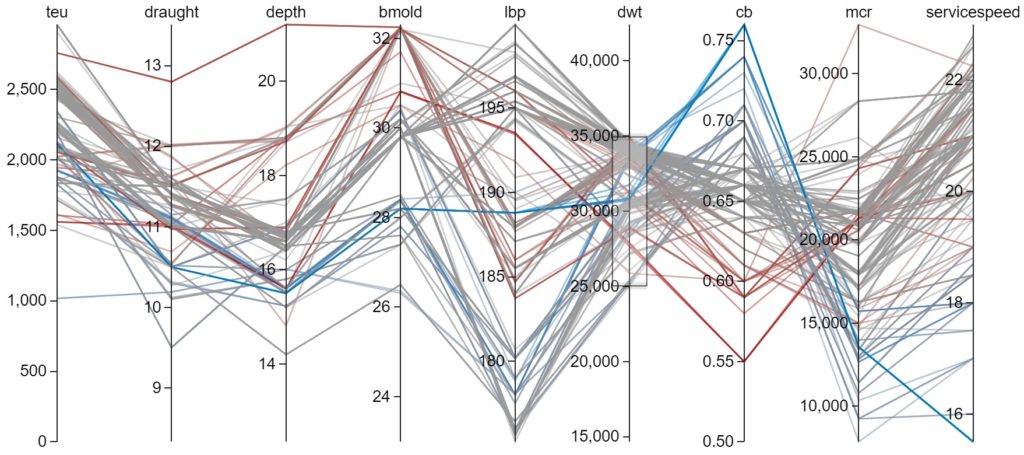C-Job R&D News: Maritime Intelligence Tool
One of the key factors influencing the profitability of a ship is its performance – how good is it at the job for which it was designed? In real-world situations, this means asking questions like: What is the lifting capacity of that heavy-lift vessel? How much sediment can that dredger hold? At which speeds do ferries in this range typically sail?
In the lengthy process of financing, designing, engineering, and building a new vessel, ship-owners have one thing on their minds: to get the best out of their vessels. C-Job Naval Architects has developed the Maritime Intelligence Tool (MIT) for this reason: to help ship-owners decide on the best vessel design for their needs.
Explaining the maritime intelligence tool
C-Job describes the MIT as an interactive big data toolbox. Looking at the numbers involved, it is clear to see why the company chose these words. “It is a database comprising data from 170,000 ships,” says Thijs Muller, head of C-Job’s R&D department. “But it is growing every day. In the end, it will grow to contain data from 220,000 ships.”
The MIT organizes the data into data fields; showing detailed information on service speed, draught, length, engine capacity and so on. This allows comparison of new-build design variations in the database.
Using a great number of different data fields for one ship is admittedly overcomplicating the process. C-Job has tackled this issue head-on by fine-tuning the data selection. “Each ship type has its own KPIs – so we focus on those. This could be cargo volume or crane capacity; whatever you are interested in. This way, we use only the most relevant data fields; leaving the irrelevant data out for this particular vessel type.”
Making informed design decisions
“We provide these data to shipowners in a market intelligence report. This plots all the possible design options open to them, including their competitors’ vessels,” adds Thijs. “This report contains information of up to 1,200 hyper-relevant ships.”
This is the point of the Maritime Intelligence Tool: it enables owners to make more informed decisions as well as identify potential opportunities and recognize gaps in the market.

Because ship design is often a trade-off between objectives (length vs. breadth, speed vs. fuel consumption etc.), C-Job has included an in-house developed optimization algorithm into the MIT. This algorithm – called the Reference Finder – finds the best combination of parameters to create the optimum and most effective designs. The graph above illustrates this, using light ship weight against maximum continuous rating as an example. It shows the optimal design variations on the so-called pareto frontier.
Fast & easy to read
Even though the data contained in the MIT is for the most part publicly available, what makes it a unique and extremely valuable tool is how C-Job handles this vast amount of information. “The strength of our platform is that, within a few mouse clicks, you can compare vessels – multiple vessels – simultaneously. On top of that, we display the data in charts that are easy to understand. This is very useful for the client.”

The images above are screenshots of an online demonstration that Thijs has recently given with the MIT. This is what a client would see when using the Tool with C-Job’s design teams. Thijs explains: “Here we are using nine data parameters – you can see these at the top of the image. They include details about draught, length and breadth of vessel, displacement. We use this to find connections between the variables. This shows you trends too – whether or not your design is outside of the trend, and whether this could be an advantage or disadvantage.”
Thijs can use the MIT to answer the most pertinent questions on the minds of C-Job’s clients. “Questions like: I need to be able to carry so much cargo – what length of ship do I need? Or how does this design compare to my competitor’s design? The Maritime Intelligence Tool gives rapid insight into all these questions to find a solution.”
